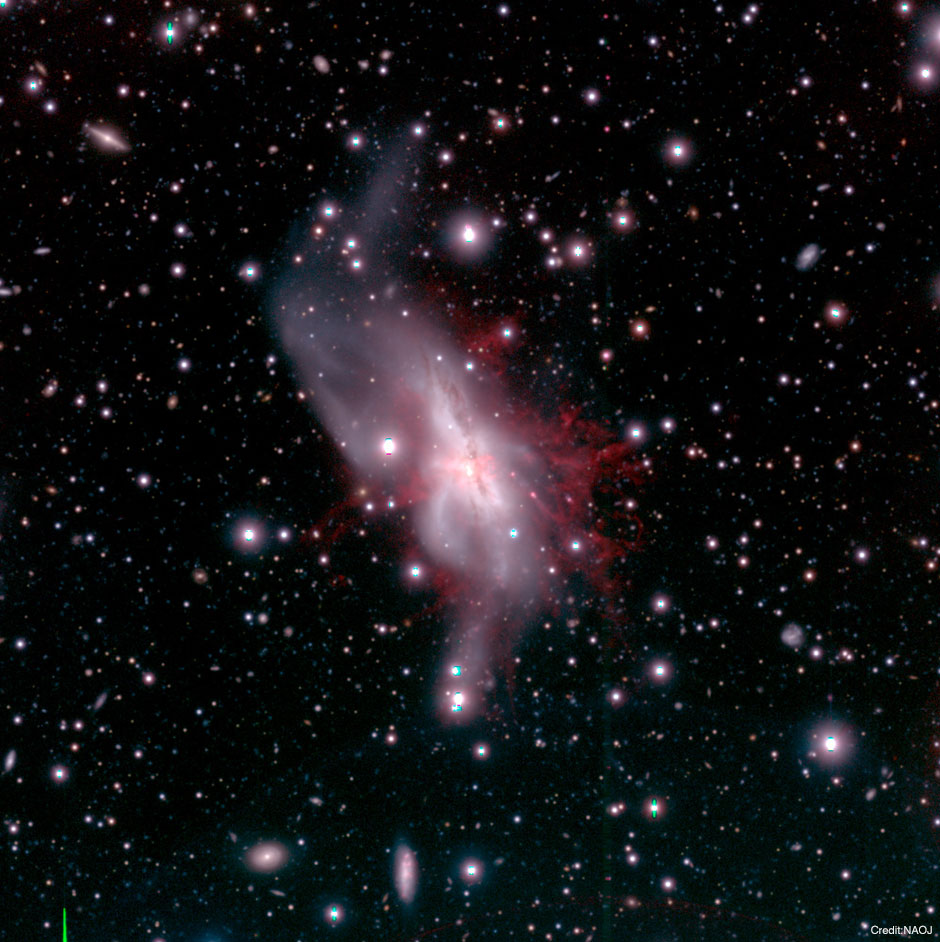Massive Galactic Wind Blown by the Coalesced Galaxy NGC 6240
Astrophotography・

This image captures a coalesced galaxy NGC 6240, located approximately 300 million light-years away, and also the galactic winds (red filament structure) extending around the galaxy. NGC 6240 is a galaxy formed when two spiral galaxies, about the same size as our galaxy, coalesced. It doesn’t look like the previous galaxies before the coalescence; the whole morphology has a strangely twisted shape. High-resolution observation by the Subaru Telescope revealed the detailed structure of NGC 6240’s galactic wind.
A Galactic Coalescence and a Galactic Wind
Sometimes big galaxies are mutually attracted by each other’s gravity, finally colliding and coalescing. At that time, gases in the galaxy lose support (angular momentum) through the gravitational interactions, and fall to the center of the coalesced galaxy, causing massive stars to form rapidly in the center of the galaxy. Strong radiation from massive stars and massive supernova explosions, generated in this intense star formation (starburst), eject the gas out of the galaxy at this time. This is called “galactic wind.” When the galactic wind blows, gas gathered in the center of the galaxy blows off, so the galaxy runs out of gas, and star formations stop. Once the galactic wind ceases to blow, the gas might start to collect again, and the galaxy might start to make stars again. The galactic wind is closely related to star formations in galaxies. By analyzing the galactic wind structure of NGC 6240 captured in detail by the Subaru Telescope, it became clear that large-scale star formation occurred at least three times after the galaxies began to coalesce.
Text by: Michitoshi Yoshida (Subaru Telescope, NAOJ)
Translation by: Hiroko Tsuzuki and Ramsey Lundock (Public Relations Center, NAOJ)
Image Data
| Object | NGC 6240 |
|---|---|
| Telescope | The Subaru Telescope |
| Instrument | Suprime-Cam |
| Wavelength | B band (440 nanometers), R band (660 nanometers), and Hα band (656 nanometers) |
| Exposure | 1500 seconds (B), 900 seconds (R), 6000 seconds (Hα) |
| Date | April 30, 2014 |
| Photographer | Michitoshi Yoshida and Masafumi Yagi |
| Credit | National Astronomical Observatory of Japan |